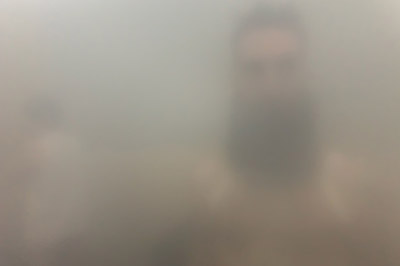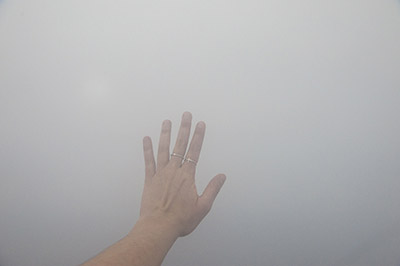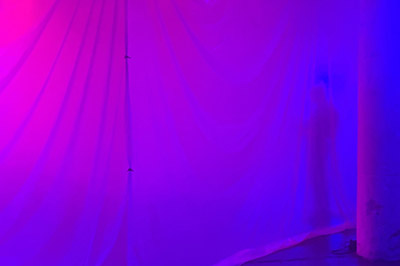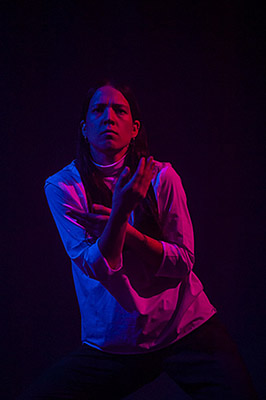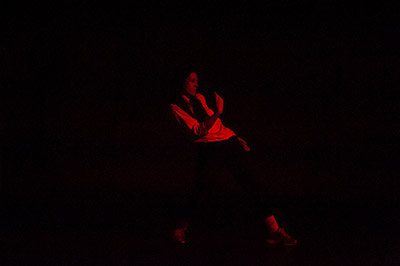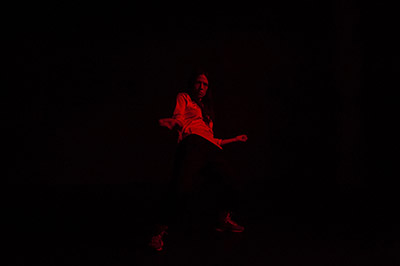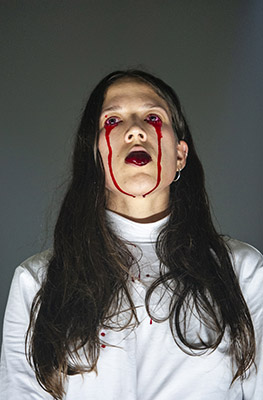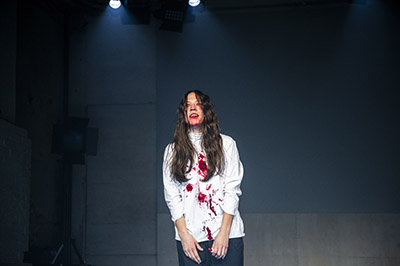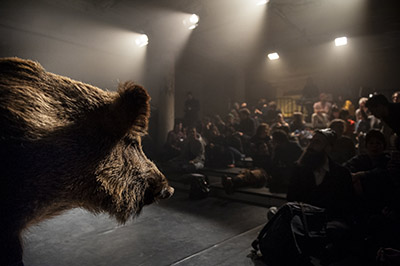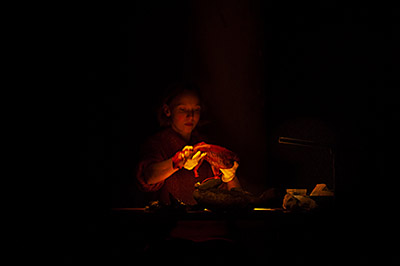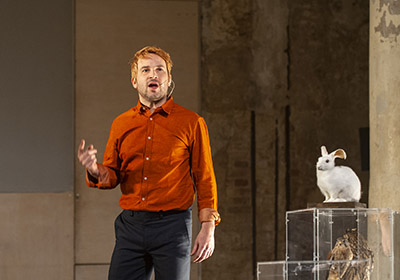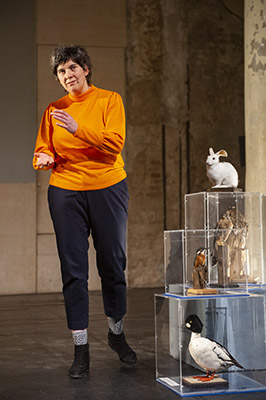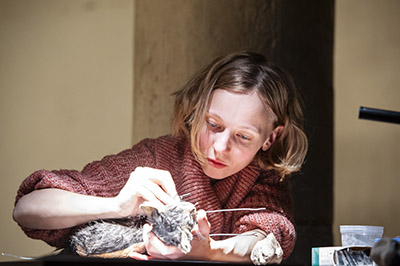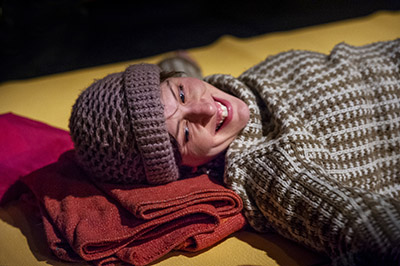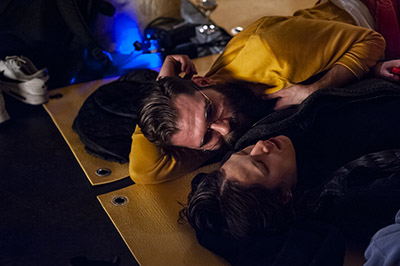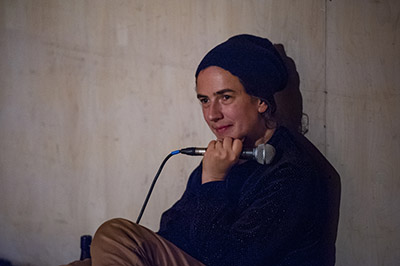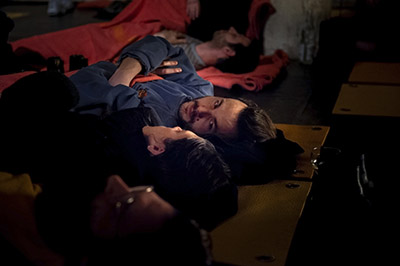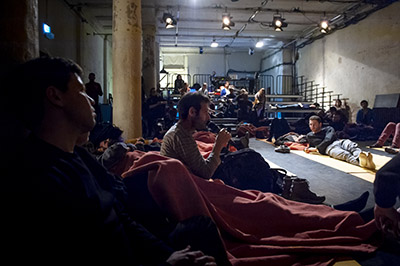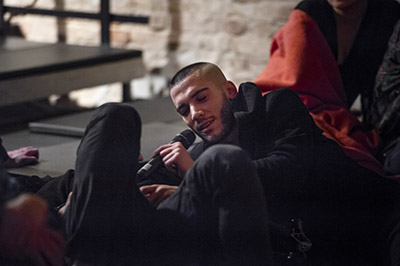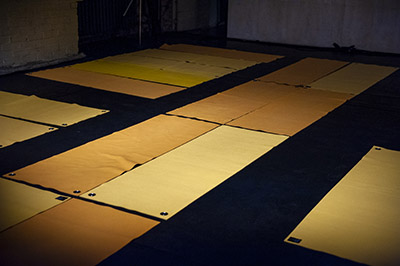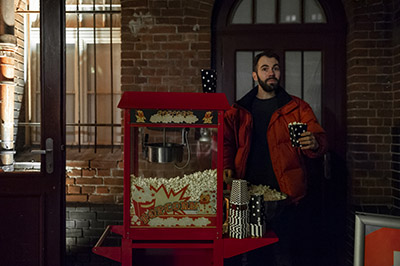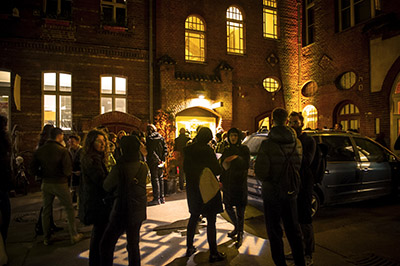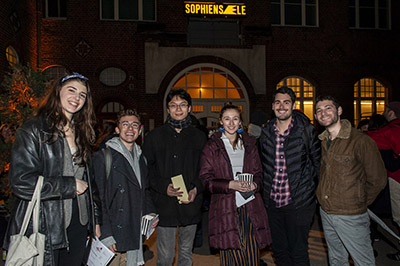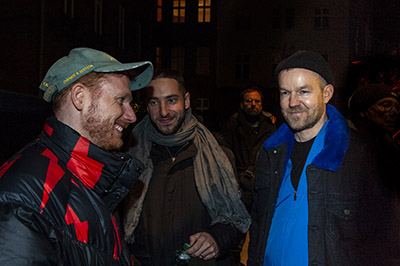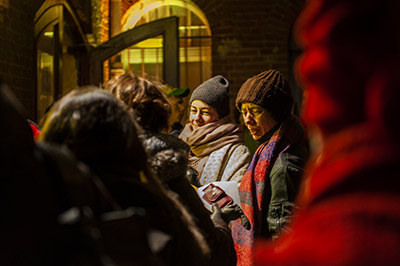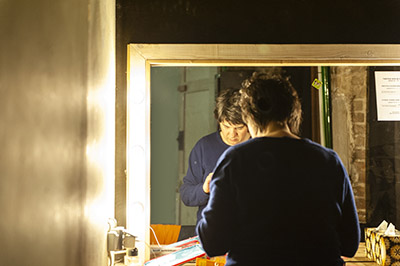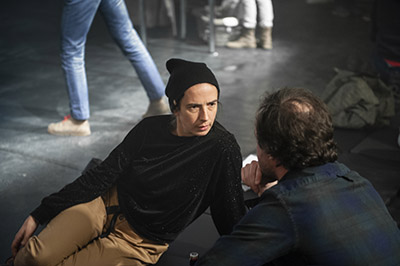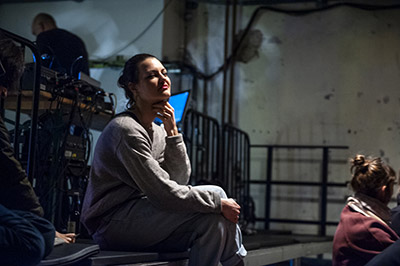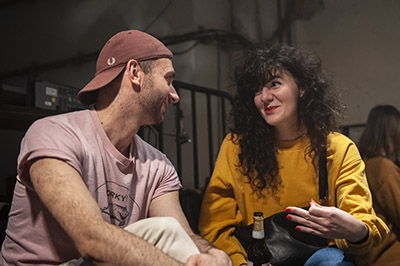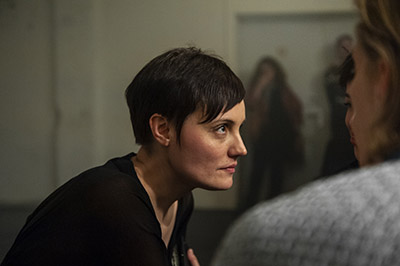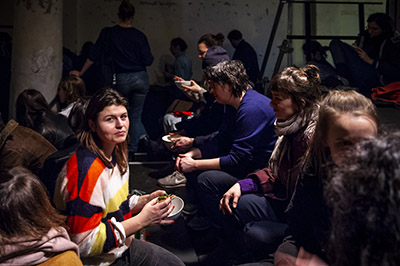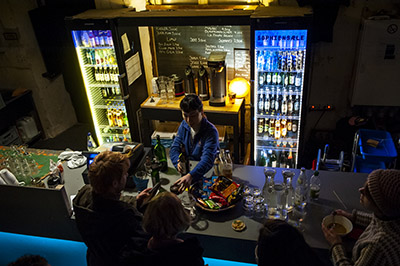A Poetics of Dissociation But Like Casual?
Maxi Wallenhorst
Do performance-makers dream of durational sheep? I'm too tired to come up with a better version of this joke. But this was one of the questions the fourth edition of Dirty Debüt evoked for me by making Sleep its title: How do insanely busy people, like performing artists at the beginning of their professional career, relate to something they might only engage in on planes or in rare moments of self care?...
A Poetics of Dissociation But Like Casual?
Maxi Wallenhorst
Do performance-makers dream of durational sheep? I'm too tired to come up with a better version of this joke. But this was one of the questions the fourth edition of Dirty Debüt evoked for me by making Sleep its title: How do insanely busy people, like performing artists at the beginning of their professional career, relate to something they might only engage in on planes or in rare moments of self care?
How would these of all people manage to fall asleep in a theatre? The dynamics between sleep and stage – the complex relationship between inactivity and aliveness it entails – is unsurprisingly a central discourse of the dance / performance / theatre complex. While some scholars often pose this debate as a conflict between styles of performance and being an audience, namely full-on 80s performance mode presence and the ghostly absence of the 90s and 00s, others have tried to shift the attention to the more material conditions of this discourse: Is it only white men who get to capitalize on doing very little? And, to ask the other way around, how much are young performers paid to perform endless hours of supposedly casual passivity at the Venice biennial?
However, perhaps tired of these dichotomies, none of the performances that premiered at Dirty Debüt treated sleep as capital letter Negativity or capital letter Sleep, everyone's favourite death metaphor. What might or might not have connected the pieces was a less high-tone, yet at times not less uncanny, approach to sleep. Or merely passing by rather than approaching it, the lying around kind of passing by.
The entrance into the night splits the audience in two: Some of them are entering a cube in the centre of the stage, made of plastic curtains and fog – others are taking seats outside of it, to see from there what would unfold in the following. I am standing next to a friend I hadn't seen in forever, as slowly the drone sound intensifies, moving across the space. A fog machine hisses. This is dissociate by Joseph Wegmann. Driven by light and sound, the installation navigates an affective landscape, carrying me inside. While there are fragments of a club experience surfacing through a shattered beat, there is no space for mere escapism. Allusions to sirens, emergency lights find their way through the fog, the policing of the night is perceptible. A moment of warm red, faces suddenly look intimately close, then again more darkness, then – as the curtain falls – a group sculpture of mostly naked bodies, waving at us, smiling, or did I make this up?
“Were there people there”, was one of the questions Alice Chauchat asked during her poetic feedback session after the performances, and it made sense to me, that she didn't really attach a question mark to this question. The people that greeted me from behind the curtain were certainly ... people? The friend, with whom I touched elbows, she is probably to be counted among the category of ... people? But it is not impossible that a little bit of the people-ness of people gets absorbed by the fog. They were there, not very absent, but they were there, a split second before being people. I remember I've once heard my favourite life coach aka feminist theorist Lauren Berlant talk about dissociation. Sadly I wasn't in the moment enough to take good notes, but I think she was talking about something dissociate might have been onto, a poetics of dissociation, navigating the split second before recognizing something as something – the good kind of repressing, that makes an encounter possible.
As the second performance of the evening – ZMORA — begins, an opera songs blasts into the space. Julia Plawgo, choreographer and performer of the piece, displays her drag-race-worthy lip-sync skills and accompanies the grand expressions that move her face by seemingly disconnected circling movements of her arms. A change of song, lighting, genre follows, it's pop now and at some point two victory signs emerge from the dancing, lonely signifiers, almost uncanny in their isolation. Eventually, Plawgo takes a break and a sip of water and goes on to place some liquid right under her eyes, so that she can cry tears of blood. At the same time another red mass falls from her mouth, maybe some intestines, or a half-chewed organic energy bar, or a prop, or everything at once. In the end, Plawgo sings another song, is it her quote unquote real voice that is now amplified by a mic, covered in heavy guitar sound and headbanging.
This performance entertains an offhand, semi-awake relationship to its movement material, while never resorting to lazy distancing. Evoking the figure of the zmora, which is the Polish word for mare in English or Nachtalb in German, the piece shows bloody traces of horror and – in true genre fashion – they are never deadly serious .The moves have an animalistic quality to them, but like, casual? As if the dark posthuman everyone wants to make art about right now is to be found rather in folkloristic B-Movie splatter than in capital letter Sublime arthouse. The program labels the performance as a compositional nightmare – which is, of course, not true in the normative sense of nightmares being bad. But it might be true that this is what composition would have dreams about that keep it awake at night: Loosely related tracks of a choreography follow each other associatively, or dissociatively really, like in haunting.
The third performance of the night, The Big Sleep by Alisa Hecke and Julian Rauter starred a skinned dead cat, that entered the stage in a bucket. The person carrying it takes a seat at a table, turns on a working light and goes on to make a sketch of the body, then to apply its skin to a model of a cat. This skillful paradox – the live taxidermy – is an anchor of the performance, the precise, but also surprisingly ordinary task of preserving something from withering in time, at least for the moment of a rest of a human life. Meanwhile at the centre of the stage – that is filled with stuffed animals, a boar even, a white rabbit, too – three performers are presenting a text, that is derived from interviews with taxidermists. Among the highly reflective things we hear these interviewees say about their work via the performance is an impression about the people who want them to perform a taxidermy on their pets, say, a cat.
These pet-owners, the performers keep telling us, are disavowing their animals' death, they want it to be less ordinary, more like the romantic titular Big Sleep. The problem is that it is not very much the cat, that materializes as stuffed animal, but a cat, as a cat is the only cat a taxidermist can prepare. The singularity seems to get lost in the difference of taking a nap and death. The performance is a multi-layered investigation into these distinctions: between the liveness of a stage and and the being alive of an animal, between performative embodiment and disembodiment, between the red eyes a white rabbit has in the reality of a laboratory versus the black eyes the taxidermist chooses to make it look more natural.
The last performance "This is an Invitation", finally, is claiming to help us fall asleep. The piece begins, in true workshop fashion, with an atmospheric soundscape played from a phone (the mini-jack cable that connects it to the sound system has long become a true icon of so many somatic practices). A performer reads, in his most soothing ASMR voice, the instructions for a choreography by Boris Charmatz, Levée. Another performer, Netta Weiser herself, is performing these movements, either as demonstration or practice or perhaps both. These texts and movements are adapted from video tutorials that were produced in the context of the Tempelhofer Feld participatory mega-dance-event at the Volksbühne opening in the Fall of 2017, though they were translated into English and toned town to a more narcotic sound. Also – if I'm not mistaken – what in the videos is done by one single person, talking and dancing, is here distributed onto two performers, further dispensing the conceptual integrity of Levée.
In inserting it into a more pop context, the performance lulls some of the choreographic intensity, some of the institutional vibe of the original piece. Its practice becomes visible in a different light, in the dim light of what could be a Mitte Yoga studio instead of daylight. But unlike an actual Yoga, sleeping or dancing tutorial, the effectiveness and purposefulness of this unit remains dubious. What is it for, what is it against? An experiment in layering conceptualism with pragmatism with conceptualism, it dares to be in a limbo about its goals.
As someone who has to get up early regularly plus a phone addiction, the night time might still be the right time to see performances, but it's often too late for me – and I think I'm not the only one – to stay awake-awake for feedback formats and Q&A. The sometimes more institutional, sometimes more personal desire for clarification of these after hours often doesn't match with the energy level that is there. Alice Chauchat's feedback format however, that combines yoga mats and blankets with some banana coconut soup, has a different approach to recapping what happened. Softly guiding the audience throughout an hour or so, her poetic questions about the audience's perception of the performances almost rather blur the memory of them. They reframe the evening from the perspective of lying awake at night, but together, not alone. People are visibly tired, not paying attention or too much, they are giggling or annoyed. As always! But giggling is actually okay in this moment. Sometimes, for better or for worse, people are talking in that style of monologuing I remember from post-childhood / pre-teenage sleepovers.
As this lullaby of a night came to an end, so did the first season of Dirty Debüt. As I lie on the mat, or maybe in my bed the hangover day after, I think about how insanely difficult it is unter the conditions of the Freie Szene to consciously produce and then also to show work, that is not fully awake yet, that is still open for hitting the snooze button a couple of times, didn't have coffee yet. This might only be a so-so metaphor, and it might be a trivial thought that is wrapped in it. But I feel like, in a time where more and more people might be determined to get more sleep in their lives, rough sketches, small forms, short pieces are a such good problem to have.
All of this was happening and sometimes not happening in Berlin 2018 / 2019. Strange how little Berlin – everyone's least favorite and most talked about topic – had played a role over the course of the four editions. While a truly metropolitan city might in fact never sleep, it could be the case that Berlin is always half-asleep? Like me at the bar circa four hours later, like the virtuosos of dissociation who are staring into the abyss of nicely coloured furniture, like everyone who is too exhausted to properly work, care, fuck, or relax (and does or doesn't do so anyways).
